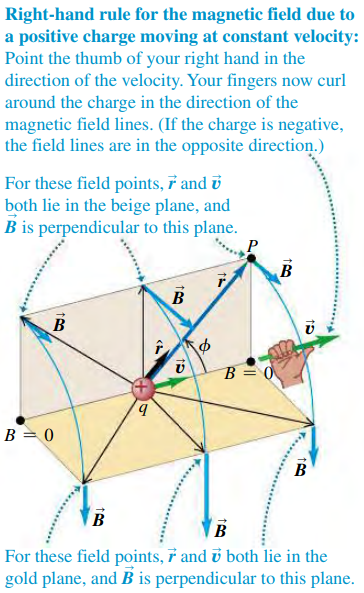2801 Magnetic Field of a Moving Charge
Moving Charge: Vector Magnetic Field
The magnitude of is proportional to and to . But the direction of is not along the line from source point to the field point. Instead, is perpendicular to the plane containing this line and the particle's velocity vector . Furthermore, the field magnitude is also proportionalto the particles's speed and to the sine of the angle .
- unit vector that points from the source point to the field point.
- distance from point charge to where field is measured.
- Charge
- Velocity
- magnetic constant.

EXAMPLE 28.1 Forces Between Two Moving Protons
Two protons move parallel to the x-axis in opposite directions (Fig. 28.2) at the same speed (small compared to the speed of light ). At the instant shown, find the electric and magnetic forces on the upper proton and compare their magnitudes.

Solution
Coulomb's Law gives the electric force on the upper proton. The magnetic force law gives the magnetic force on the upper proton.
The forces are replusive, so is vertically upward (+y-direction).
The velocity of the lower proton is . From right hand rule for the cross product , the field due to the lowe proton at the position of the upper proton is in the +z-direction. The magnetic field is
The velocity of the upper proton is . so the magnetic force on it is
The magnetic interaction in this situation is also repulsive. The ratio of the force magnitude is
When is small in comparison to the speed of the light, the magnetic force is much smaller than the electric force.